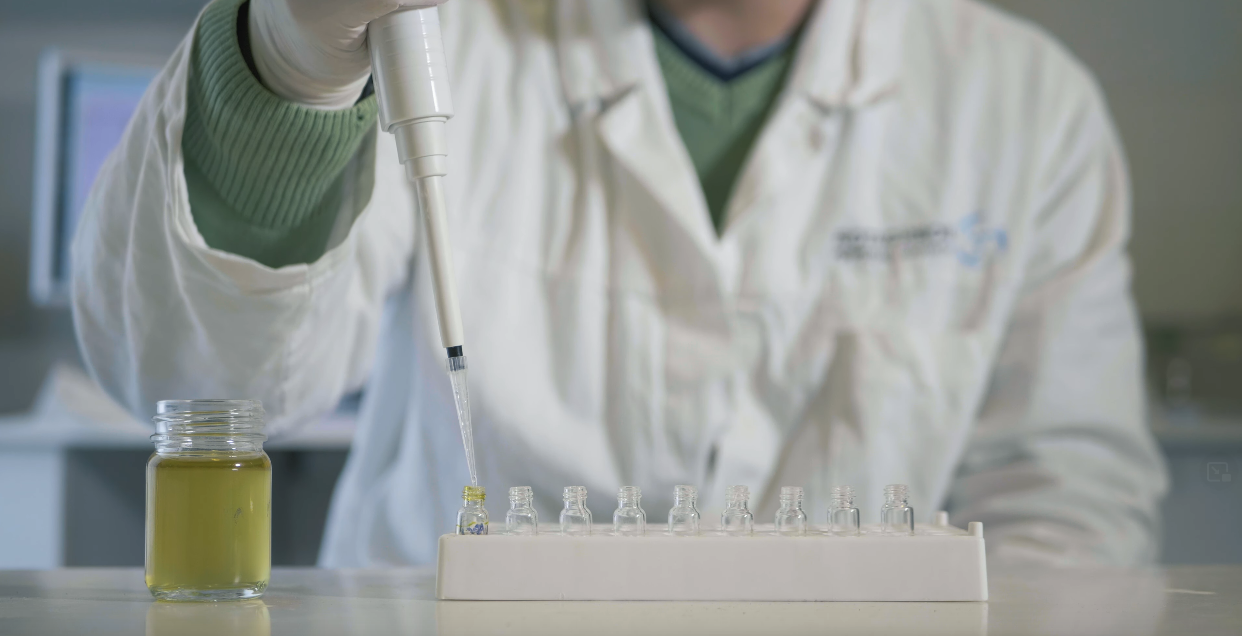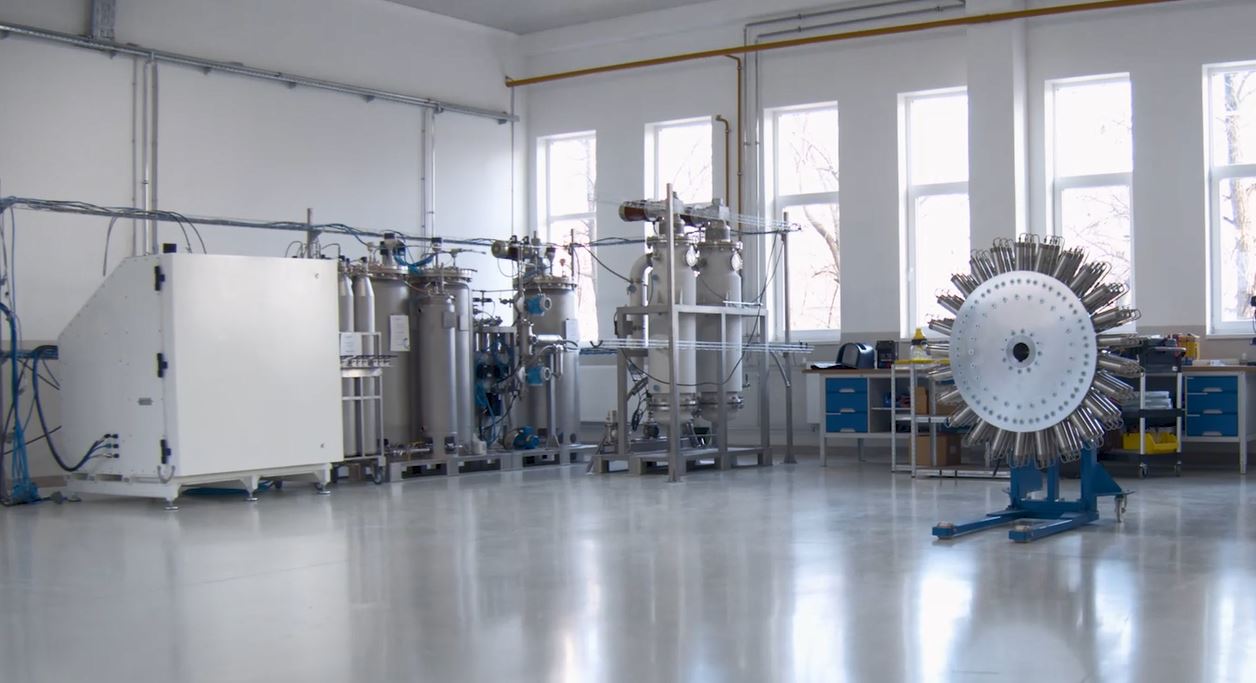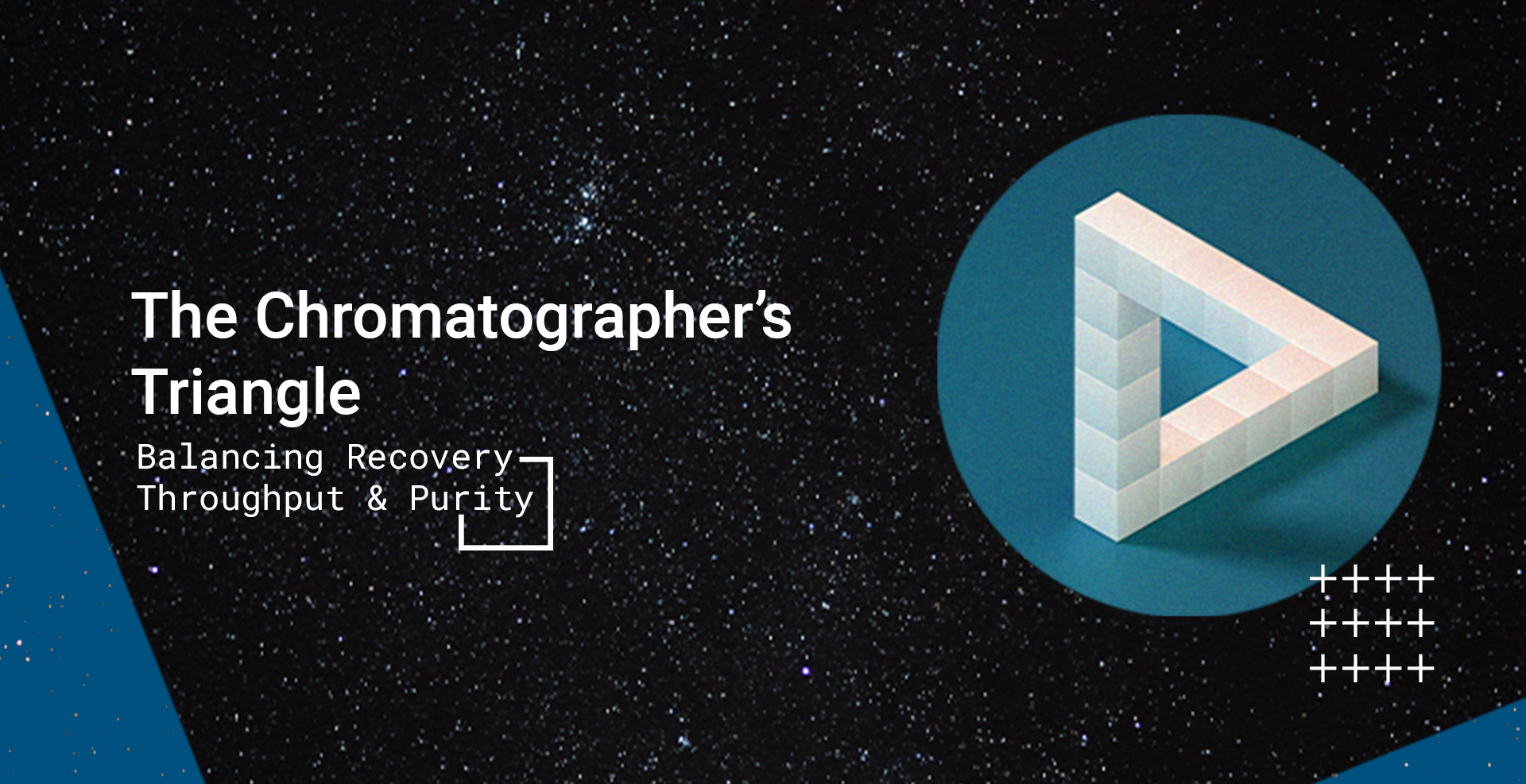Increasing separation efficiency by pH adjustment in Centrifugal Partition Chromatography
NewsChromatographic methods are used to separate and purify individual components of a mixture. Purifying compounds, however easily become a balancing act. Throughput, recovery and purity are 3 essential goals and qualities which chromatographers have to balance according to which is most important to them in an individual purification task. In this article, we are going to look at the so-called “chromatographer’s triangle”, and examine which aspects you need to account for to strike the perfect balance in your purification tasks.
First, we will look at the two chromatographic scales: analytical and preparative.
Analytical Chromatography
Analytical chromatographic methods are used to obtain qualitative and quantitative information about a sample. These methods typically involve small sample sizes of 1-10 mg and operate at a flow rate of 0.5-2 mL/min. Examples of analytical chromatographic techniques include high performance liquid chromatography (HPLC).
Preparative chromatographic methods, on the other hand, are used to isolate a specific component of a mixture (called the compound of interest, or CoI) or to remove impurities from the mixture. These methods are capable of processing much larger amounts of material, often in the range of hundreds or thousands of grams and operate at higher flow rates in the range of liters per minute. Preparative chromatographic systems are typically operated under overloaded conditions, meaning that the injected amount of sample is greater than what can reach equilibrium between the stationary and mobile phase. As a result, the peaks produced by preparative chromatography may be broad and distorted, in contrast to the narrow, symmetrical peaks produced under analytical conditions.

Preparative Chromatography
In preparative chromatography, the goal is typically to isolate the maximum amount of the compound of interest (CoI) at the highest purity in the shortest amount of time. However, these three parameters are often in tension with each other.
For example, increasing the yield of the CoI, or the amount of the CoI that is isolated, often comes at the cost of lower purity. This is because the separation process may also result in the isolation of impurities along with the CoI. Similarly, increasing the purity of the CoI may come at the cost of lower yield, as some of the CoI may be lost in the process of removing impurities.
Increasing the throughput, or the amount of material that can be processed in a given amount of time, may also come at the cost of lower yield and purity. This is because high throughput operations often involve the use of more aggressive conditions, such as higher flow rates and stronger eluents, which may result in the loss of some of the CoI or the inclusion of impurities.
Balancing Recovery, Throughput and Purity – The Chromatographer’s Triangle
Overall, it is important to carefully balance these three parameters in order to achieve the most efficient and effective separation process. The specific trade-offs that are made will depend on the specific goals and constraints of the separation.
It is worth noting that the ultimate measure of the performance of a chromatographic system is its resolving power, or resolution. This parameter reflects the ability of the system to effectively separate different components of a mixture and is determined by both the selectivity and efficiency of the system. Selectivity refers to the ability of the system to discriminate between different components, while efficiency refers to the degree of peak broadening that occurs during the separation.
In practice, both analytical and preparative scale separations are often used in conjunction with each other. The development of a purification method typically begins with small-scale analytical separations, which are then scaled up to the preparative level. Additionally, the fractions collected during a preparative separation are often analyzed using analytical techniques to confirm the purity and identity of the isolated compounds.
Balancing the chromatographer’s triangle
It is important to note that analytical and preparative scale separations are complementary and often used together in the development and implementation of purification projects. While method development typically begins with small-scale analytical separations, preparative scale separations are often used to isolate larger amounts of the desired compound. Additionally, the fractions collected during preparative separations are often analyzed using analytical techniques to confirm the purity and identity of the isolated compounds.

Centrifugal Partition Chromatography
A special type of chromatography, called centrifugal partition chromatography (CPC), may be a great solution to the chromatographer’s triangle. CPC offers a highly versatile solvent system, and the flexibility to purify a large variety of compounds. CPC is a liquid-liquid chromatography technique that is used to separate and purify compounds in a mixture. It is a relatively new technique that has gained popularity in recent years due to its simplicity, efficiency, and cost-effectiveness.
One of the key features of CPC is its use of a liquid stationary phase, which is immobilized by a strong centrifugal force. This eliminates the need for traditional chromatographic columns or solid stationary phases, such as silica gel, which can be expensive and difficult to work with. The liquid stationary phase is typically packed into a series of interconnected cells, which are attached to a large rotor. The mixture to be separated is introduced onto the top of the cells, and the mobile phase is passed through the cells in the form of tiny droplets. The compounds in the mixture are separated based on their affinity for the stationary phase.
CPC is a versatile technique that can be used to separate a wide range of compounds, including small molecules, proteins, and other biological compounds. It is particularly well-suited for the purification of compounds on a preparative scale, due to its high yield, throughput, and productivity.
In addition to its simplicity and efficiency, CPC has several other benefits, including low sample loss, high output capacity, and the ability to reuse the cells after a rinse. This makes it a cost-effective and environmentally friendly alternative to traditional chromatographic techniques.
Overall, CPC is a powerful and versatile technique for the separation and purification of compounds. Its simplicity, efficiency, and cost-effectiveness make it a valuable tool in a variety of fields.
Resources
To learn more about CPC and chromatography in general, click any of the links below.



